#zhigansk
Explore tagged Tumblr posts
Photo
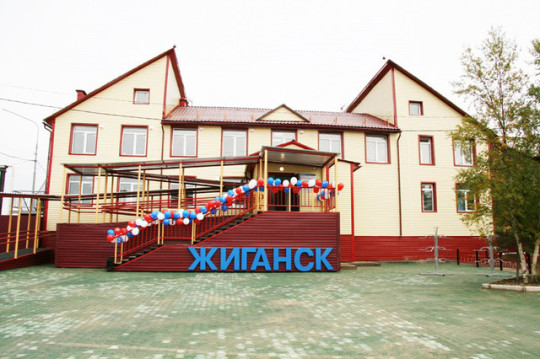
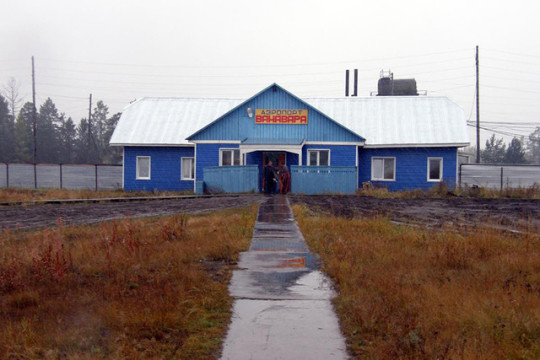
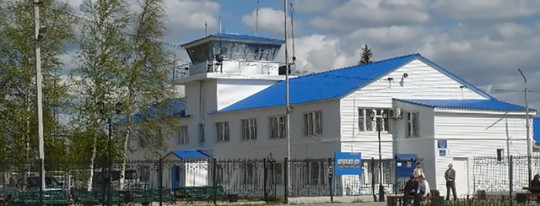
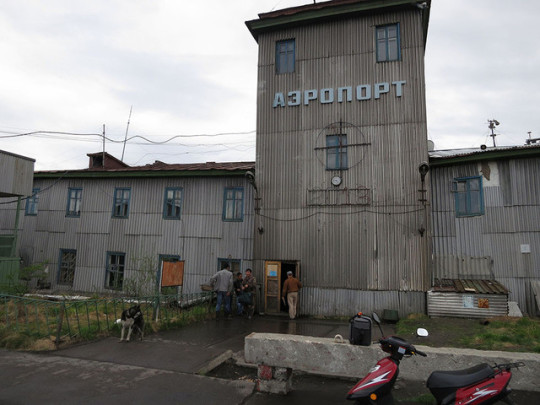
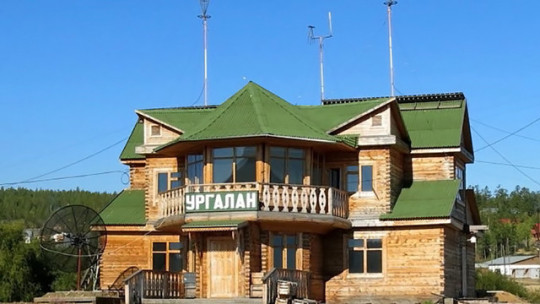
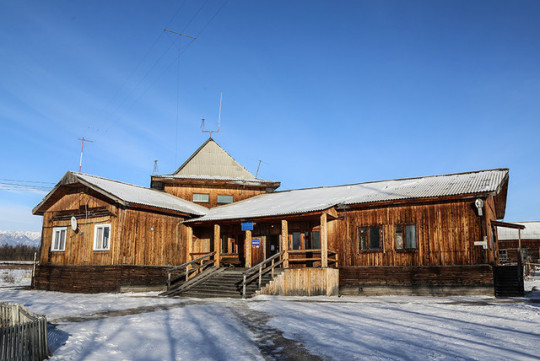
Wooden Airports in Russia:
Zhigansk Airport (Sakha Republic).
Zhigansk had a population of 3.420 in 2010, and there is no year-round access by road. In the summer, the village can be reached by boat via the Lena River; when the river is frozen, there is a winter road leading to Yakutsk.
The airport has regular flights to Yakutsk and other settlements, and also helicopter flights. The building pictured above is new.
Vanavara Airport (Vanavara, Krasnoyarsk Krai).
The Ilimpeya River cuts off regular road access, so it is only possible to arrive by car in winter. North-east of the village is the airport, with a concrete runway as well as a forest clearway reaching for 3km, which suggests that it may have been longer in the past. Flights from the neighbouring town are twice a week.
Igrim Airport (Igrim, Khanty-Mansi Autonomous Okrug).
This village is located on the right bank of the Sosva River. Several large natural gas fields were discovered and developed here during the 1960s, and an airport was built as a result. The airport has a dirt runway, probably the only one in Russia, and there are flights to Khanty-Mansiysk (administrative centre of the okrug), Beryozovo and Tyumen.
Khatanga Airport (Khatanga, Krasnoyarsk Krai).
This major airport is the largest Arctic airport, and is in use 24/7 throughout the year. It is a hub for tourist expeditions to the North Pole via the island of Sredny Ostrov. As the Arctic regions are still sensitive military zones, Khatanga is the first stop that requires entry permission from Federal Security Service border guards.
Khatanga Airport has flights to Krasnoyarsk and Norilsk, as well as local flights. It is only equipped for landings during good weather, but serves as a diversion airport for twin-engine airliners who suffer engine problems while flying over Siberia. Interceptor aircraft were based here during the 1970s, and possibly also deployments from Bratsk (Irkutsk Oblast).
Uorgalan Airport (Uorgalan, Khabarovsk Krai).
This regional airport services work in the Kondyor Massif deposit of precious metals.
Chara Airport (Chara, Zabaykalsky Krai).
In the past, the village of Chara was the centre of the local gulag, and prisoners were brought here from Chita on small planes. The runway was prepared by geologists who found deposits of copper and uranium nearby.
The airport is open only in the daytime, as it is surrounded by the high Kodar Mountains. Flights run to Chita's Kadala Airport three times a week.
#history#military history#aviation history#transportation#architecture#soviet architecture#russian architecture#ussr#russia#siberia#sakha republic#krasnoyarsk krai#khanty-mansi autonomous okrug#khabarovsk krai#zabayalsky krai#zhigansk#vanavara#igrim#khatanga#uorgalan#chara#chita#gulags
42 notes
·
View notes
Text
Siberian History (Part 8): To the Pacific Ocean
The Russians had first heard about the Lena River (the easternmost of the three great Siberian rivers) from the Evenks (called Tungus at the time). The Evenks also told the Russians about the Yakuts, or “horse people”, who lived along its shores.
The Yakuts were pastoral nomads who had originally lived in regions further south. But upheavals accompanying the rise of Genghis Khan forced them to flee northwards, and they eventually settled along the middle Lena River. There, they continued to breed cattle and horses despite the harsh climate, sheltering them in their own houses during the winter.
Russians set out on expeditions from Yeniseysk and Mangazeya, reaching the Lena's western tributaries from the Yenisei's eastwards branches. They travelled across short portages of low rolling hills, and entered the river basin from the north and south.
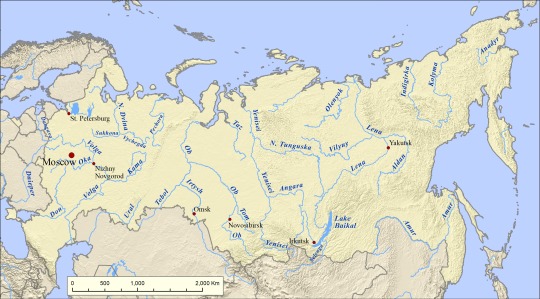
But rival exploring parties from Tomsk and Tobolsk soon showed up as well. Eventually, the government sent the Cossack Petr Beketov, who had already subjugated the Buryats and Evenks along the Angara River, and the conquest of the Lena really began.
In 1631, he portaged from Ilimsk (founded 1630) to the Lena with 30 men. They then travelled up the Lena, built a fortified camp of fallen trees, and forced the local Yakuts to pay them tribute.
In 1632, Beketov founded Yakutsk on a large bend of the Lena River, and Zhigansk to the north. (Yakutsk would later be used as a base for expeditions to the Arctic and Pacific Oceans.)

He founded Amginsk (Amga-Sloboda?), Vilyuysk (1634), and other outposts on tributary streams. Olyokminsk was founded at the junction of the Olyokma and Lena Rivers in 1635.

I think Amga is the (approximate?) location of Amginsk.
Cossack bands from various towns had begun to fight among themselves for a share of the spoils. Some even became involved in intertribal wars, on opposing sides, with some kind of hometown pride or loyalty.
In some places, tribute was collected 2-3 times from the locals, which led to uprisings (the people here had been easily subdued at first). These uprisings led to a decline in revenue for the Treasury, so in 1638 Moscow designated Yakutsk as the headquarters of a separate administrative district, from which servicement from all other districts were banned. However, this was only partially successful.
The conquest of Western Siberia had been methodically planned, but this was not the case for the east. This was a more rugged country, with frontier fortresses creating tiny islands of domination in this giant land. The Lena was about 4000km from the Ural Mountains – they were so remote from Kremlin directives that local authorities, and even individual groups, took the initiative.
Most Cossack or exploring parties were no more than 20-30 men, and some had fewer than 10; the men were called promyshlenniks (hunters and trappers). They led the way, with the state following after them, instead of the other way around as it had been in the east. They built forts to command rivers and portages, and to supervise the collecting of tribute.
At times, the lack of an organized military seemed to give the native peoples a fighting chance. In particular, the Buryats continued to fiercely resist the Russians' incursions, and their guerrilla tactics were very effective in the mountainous terrain. But in 1648, the Russians managed to ascend the Angara River as far as Lake Baikal. The Cossack Kurbat Ivanov (the first Russian to discover the lake) then crossed it, and after fierce fighting he imposed yasak (fur tribute) on the Buryats who lived on its eastern shores.
In 1649, Ivan Pokhabov (a commander from Yeniseysk), renovated the fort of Bratsk on the Angara River (which had been founded in 1631), and strengthened it with moats and parapets. He also led another party across Lake Baikal to the mouth of the Selenga River, finding himself on the Mongolian frontier.
He found that the local Buryats traded furs for silk, silver, and other goods from Outer Mongolia. He sought the warlord or khan of the eastern Mongols, Altan Khan of the Khalkha, but the khan claimed to have no silks or silver of his own, except for what he obtained from the Chinese.
Meanwhile, progress was being made with fort-building. Forts were built at Verkholensk (1641), Verkhneangarsk (1646), Verkhneudinsk (1648) and Barguzin (1648). These forts were on the sides of Lake Baikal.
In 1652, a fort was built at Irkutsk, at the junction of the Angara and Irkut Rivers.

Verkhneangarsk is now Nizhneangarsk. Verkhneudinsk is now Ulan-Ude.
The native peoples were forcibly baptized. “Those who did not willingly consent were driven into the Stream, and when they came back, a Cross was hung around their necks.” Another method was to tie 2-3 Buryats to a long pole, and plunge them through a hole in the ice into the freezing water. The Buryats attacked the Bratsk garrison in response to this treatment.
Petr Beketov was sent to restore the tsar's authority in 1652. During the year of 1653, he explored the Selenga, Ingoda and Shilka Rivers on rafts, and founded Irgensk. In the spring, he established Nerchinsk, across from the mouth of the Nercha River.
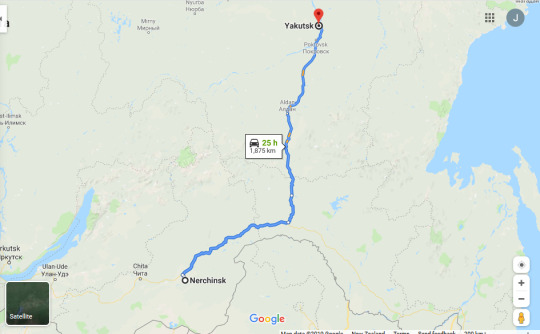
While the Yenisei River was being brought under control, progress was also being made on the Lena River. The conquest from Yakutsk proceeded in three direction – north-east to the Bering Strait, the Bering Sea and Kamchatka; eastwards to the Sea of Okhotsk; and southwards to the Amur River Valley.
Two years after reaching the Lena River, the Russians had followed the Aldan River up to its source in the Stanovoy Mountains. In 1639, 20 men under the command of Ivan Moskvitin set off to find what the native peoples called “the great sea-ocean”. They travelled up the Maya and Yudoma Rivers, throught a mountain pass, and down the Ulya River to the Sea of Okhotsk, part of the northern Pacific Ocean. They had now crossed the whole of northern Asia.
#book: east of the sun#history#military history#colonialism#geography#economics#trade#russian conquest of siberia#native siberians#evenks#yakuts#buryats#russia#mongolia#siberia#khotogoids#yakutsk#zhigansk#amginsk#vilyuysk#olyokminsk#bratsk#verkholensk#verkhneangarsk#verkhneundinsk#barguzin#irkutsk#nerchinsk#cossacks#petr beketov
31 notes
·
View notes
Photo

#ديني #دين #اسلام #اسلامي #هاشتاق #اذكار #صور#رمزيات #خلفيات #تذكير #دنيا #الاخرة #استغفر#تويتر #دعاء #رمزيات_اسلاميه #ادعية #استغفار #رمضان (at Zhigansk, Sakha (Yakutiya), Russia) https://www.instagram.com/p/B1_Ecq0lGQa/?igshid=h3auwi6d9eie
#ديني#دين#اسلام#اسلامي#هاشتاق#اذكار#صور#رمزيات#خلفيات#تذكير#دنيا#الاخرة#استغفر#تويتر#دعاء#رمزيات_اسلاميه#ادعية#استغفار#رمضان
0 notes
Text
Tweeted
Opinion: "I met a young research assistant named Anya Suslova who grew up atop permafrost, in the Siberian hamlet of Zhigansk... People see it happening. There are no climate change deniers in Zhigansk," writes Eric Scigliano for @POLITICOMag https://t.co/TPACnSvAp2
— POLITICO (@politico) November 27, 2018
0 notes
Link
0 notes
Photo



Orthodox Church in Zhigansk (Siberia).
#architecture#christianity#russian orthodox church#russian architecture#russia#siberia#sakha republic#zhigansk
20 notes
·
View notes
Photo

Orthodox Church in Zhigansk (Siberia). Zhigansk was founded in 1632 by the Cossack Petr Beketov.
#history#colonialism#architecture#christianity#russian orthodox church#russian conquest of siberia#russian architecture#russia#siberia#sakha republic#zhigansk
12 notes
·
View notes
Photo

#تصويري #سياحة #عمان #الاردن #فلسطين #لبنان #مصر #سوريا #السعودية #جمال #خيل #الكويت #مروان_الشقب #فرهود_الشقب #حريري_الشقب #كحيل_الشقب #حديدي_الشقب #شاكر_المروان #دبليو_انش_جستس #ماغنوم_سايكي #قطر #ليبيا #بادرون_سايكي #غزة #العاديات #اريا_امبرساريو #الراي_ماغنوم (at Zhigansk, Sakha (Yakutiya), Russia) https://www.instagram.com/p/B1_ESw9lumi/?igshid=12l4k1dw9pdpr
#تصويري#سياحة#عمان#الاردن#فلسطين#لبنان#مصر#سوريا#السعودية#جمال#خيل#الكويت#مروان_الشقب#فرهود_الشقب#حريري_الشقب#كحيل_الشقب#حديدي_الشقب#شاكر_المروان#دبليو_انش_جستس#ماغنوم_سايكي#قطر#ليبيا#بادرون_سايكي#غزة#العاديات#اريا_امبرساريو#الراي_ماغنوم
0 notes
Photo

#خيول #الكويت #تكونرلجيا #آلات #فولو #تفاعل #تقنية #صناعة #دنيا #كيف #افكاري #فائدة #لايك #فن #اشياء_غريبة #الامارات #افكار #فكرة #ابداع #مبدع #عجيب #سبحان_الله #واهو #قطر #الدوحه #البحرين #العراق #سوريا #مصر #جواد (at Zhigansk, Sakha (Yakutiya), Russia) https://www.instagram.com/p/B1_EOD3lSV7/?igshid=g3oew5ww44p5
#خيول#الكويت#تكونرلجيا#آلات#فولو#تفاعل#تقنية#صناعة#دنيا#كيف#افكاري#فائدة#لايك#فن#اشياء_غريبة#الامارات#افكار#فكرة#ابداع#مبدع#عجيب#سبحان_الله#واهو#قطر#الدوحه#البحرين#العراق#سوريا#مصر#جواد
0 notes
Video
instagram
#horses_of_instagram #horse #horses #horselover #horsepower #horsestagram #horsebackriding #horseshow #horsesofinstagramdaily #horses #ilovemyhorse #lovehorses (at Zhigansk, Sakha (Yakutiya), Russia) https://www.instagram.com/p/B1_EJdWlIbM/?igshid=1j7x4v7mhbor3
#horses_of_instagram#horse#horses#horselover#horsepower#horsestagram#horsebackriding#horseshow#horsesofinstagramdaily#ilovemyhorse#lovehorses
0 notes